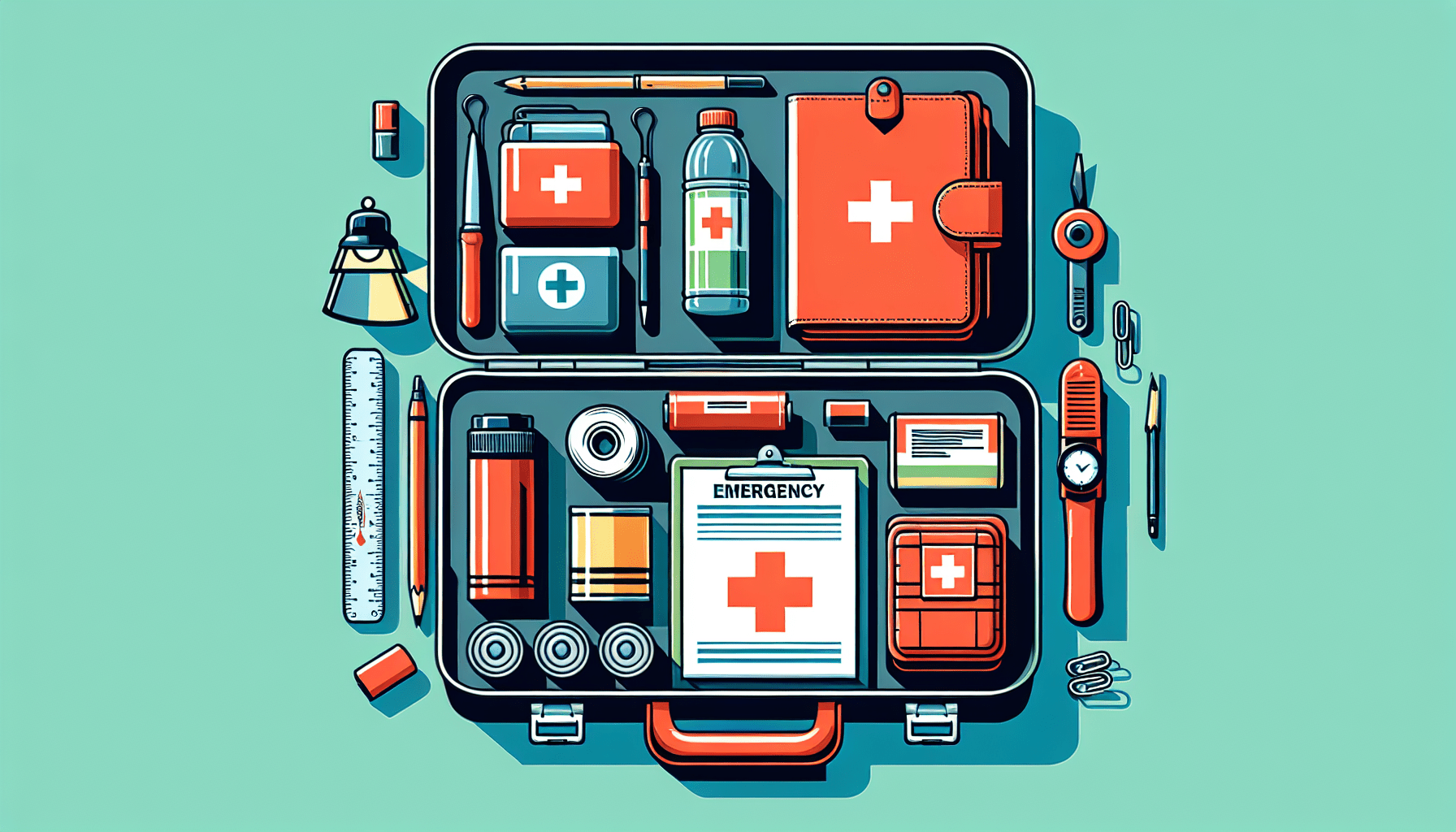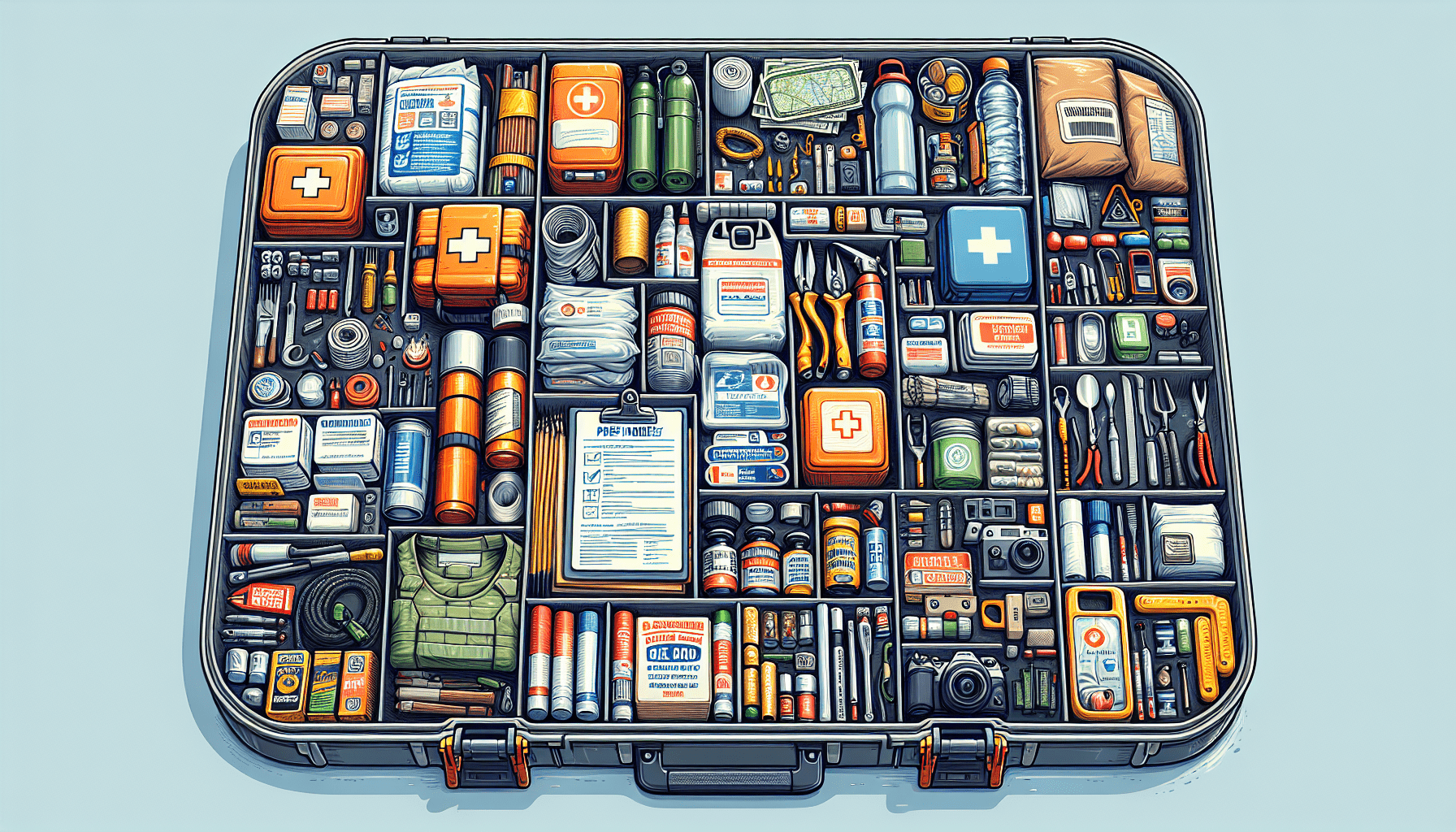In this article, we will explore effective strategies for staying organized and up-to-date with your emergency preparedness kit. It is essential to have a well-maintained kit in case of any unforeseen emergencies. By following these steps, you can ensure that your emergency supplies are readily accessible and in optimal condition, providing you with peace of mind during challenging times. So let’s get started and learn how to keep your emergency preparedness kit in top-notch shape!

Create a Checklist
Creating a checklist is the first step in staying organized and up-to-date with your emergency preparedness kit. This checklist acts as a guide to ensure that you have all the essential items needed for any emergency situation. Make a list of items that are necessary for your specific needs, such as first aid supplies, food and water, flashlights, batteries, and any other items that may be essential in an emergency.
Check Expiration Dates
Regularly inspect and replace expired items in your emergency preparedness kit. It is essential to keep track of the expiration dates of items such as food, water, medications, and batteries. Expired items may not work properly or could potentially be harmful when used during emergencies. Take the time to check the expiration dates on a regular basis and replace any expired items promptly.
Organize by Categories
To effectively organize your emergency preparedness kit, sort items into categories. By grouping similar items together, you can easily locate what you need when an emergency occurs. Use storage bins or containers to keep items organized within each category. For example, you could have one bin for first aid supplies, another for food and water, and another for tools and equipment. This organizational system will save you time and stress when you need to access your kit quickly.

Label Everything
When organizing your emergency preparedness kit, it is crucial to clearly label each item. Labels make it easy to find specific items in your kit, especially during stressful situations. Use permanent markers or labels to indicate the purpose or category of each item. For example, label a container of medical supplies as “First Aid” and a bag of food as “Emergency Rations.” This way, you can quickly identify the items you need and prevent confusion or panic.
Store in a Designated Area
Choose a specific location for your emergency preparedness kit and ensure that it is easily accessible. This designated area should be easily remembered by everyone in your household and can be easily reached during an emergency. Consider storing your kit in a closet or under a bed, making sure it is protected from extreme temperatures and moisture. By having a designated area for your kit, you can quickly grab it and evacuate if needed.
Maintain a Detailed Inventory
List all the items in your emergency preparedness kit to maintain a detailed inventory. This inventory will help you keep track of what you have and what needs replenishing. Include the quantities, expiration dates, and any specific instructions for each item. Update the inventory regularly to ensure that it reflects the current contents of your kit. This way, you can always stay informed about what you need to replace or add to your kit.
Rotate Perishable Items
Check expiration dates on food and water in your emergency preparedness kit regularly. Perishable items, such as food and water, should be consumed and replaced before they expire. Be mindful of expiration dates and prioritize using these items in your daily life to minimize waste. Regularly rotating perishable items will ensure that your emergency kit is stocked with fresh supplies at all times.
Include Important Documents
In addition to essential supplies, it is crucial to include copies of important documents in your emergency preparedness kit. These documents can include identification cards, passports, insurance policies, and contact information for family members or emergency services. Keep these documents in a waterproof container and make sure they are easily accessible. In case of an emergency, having these documents handy can greatly expedite the recovery and assistance processes.
Review and Update Regularly
Don’t forget to review your emergency preparedness kit’s contents and needs annually. Set aside time to assess the items in your kit, check expiration dates, and update any outdated or worn-out supplies. Take into consideration any changes in your household, such as the addition of new family members or changes in medication needs. By regularly reviewing and updating your kit, you can ensure that it remains functional and meets the needs of your household.
Educate Yourself
Staying organized and up-to-date with your emergency preparedness kit also involves educating yourself. Learn first aid and basic emergency procedures to be better prepared to handle any situation that arises. Knowing how to administer CPR, control bleeding, or perform basic medical procedures can make a significant difference in an emergency. Stay informed about potential risks and emergencies in your area, such as severe weather events or natural disasters, and educate yourself on how to respond effectively.
In conclusion, staying organized and up-to-date with your emergency preparedness kit is essential for ensuring the safety and well-being of yourself and your loved ones during times of crisis. By creating a checklist, checking expiration dates, organizing by categories, labeling everything, storing in a designated area, maintaining a detailed inventory, rotating perishable items, including important documents, reviewing and updating regularly, and educating yourself, you can be well-prepared for any emergency that may come your way. Take the time to implement these strategies, and you’ll have peace of mind knowing that you are ready to face any situation with confidence.
